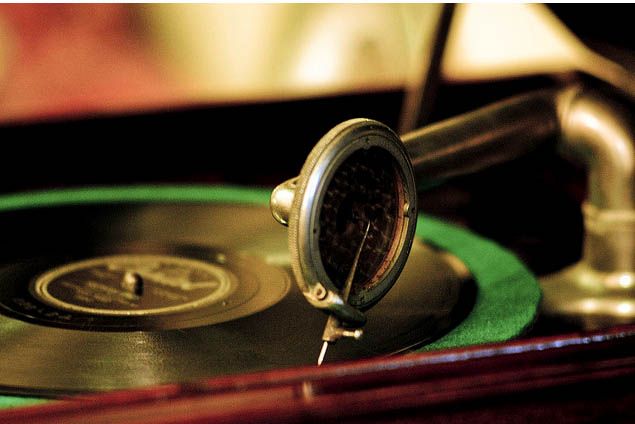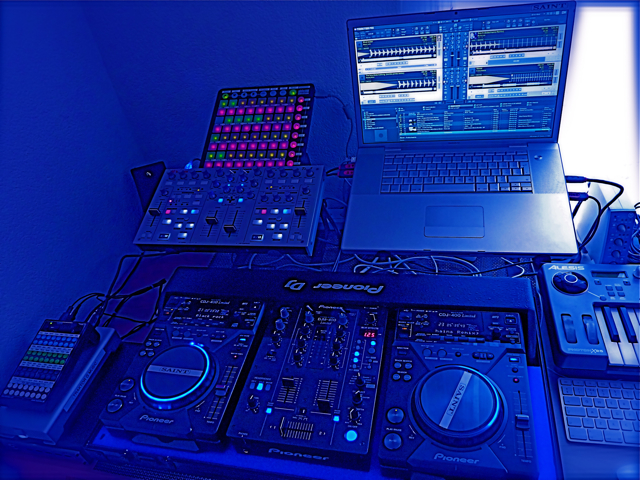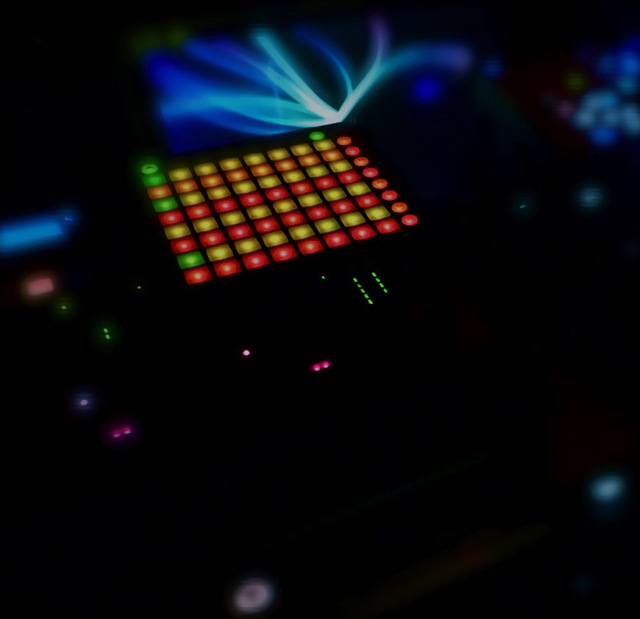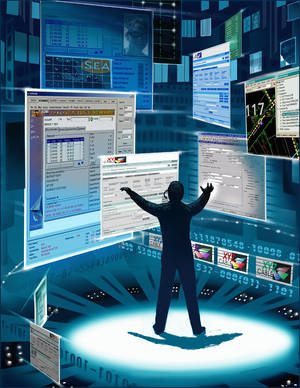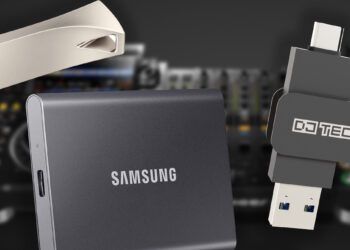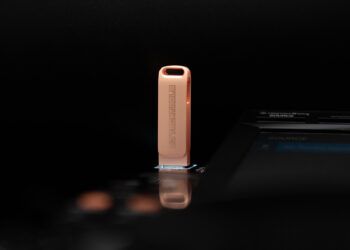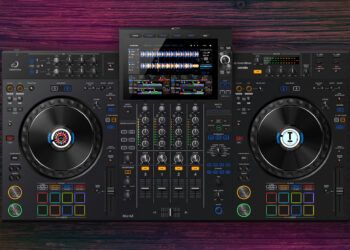When Thomas Edison introduced the phonograph to the world, I doubt anyone could have foreseen what a ground-breaking invention it would prove to be or what legacy it would spawn. Just like VHS vs Betamax or HD-DVD vs BluRay, a format war emerged; the cylindrical disc used on Edison’s machine against the German Emile Berliner’s format, a gramophone disc sometimes referred to as a phonograph disc or, as it is more commonly called, a record. Although Edison’s phonograph cylinder was both a storage and a playback medium (when using wax cylinders) as opposed to the disc’s mere playback ability, the record eventually won out in the late 1920s. We still, however, pay homage to both machines in the modern DJ world with the “phono” inputs on our mixers, and of course every musician wants an HMV-style gramophone in the guise of the prestigious Grammy award! Lets take a look back through time in order to understand where things might be headed.
BRIEF HISTORY OF THE DJ
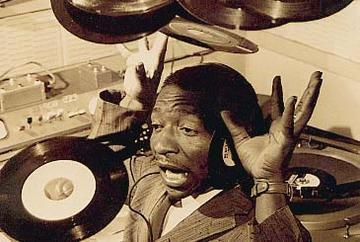
There was a novel buzz about popular music in the 1930s, and it was in 1935 that Walter Winchell, a commentator and early gossip columnist, introduced the term ‘Disc Jockey’ – a label referring to the radio announcers who were playing music discs between their news and discussion broadcasts. This type of program quickly became the economic basis of many radio stations. These Disc Jockeys (DJs) also played at functions and performed like a human jukebox whilst acting as a master of ceremonies with dialogue between records until the ‘40s, when British DJ Jimmy Savile claims he was the first to use two turntables to facilitate continuous music play. Uninterrupted music flow was the first step towards the job that comes to mind today when we hear the term ‘DJ’, and in the following years nightclubs with discotheques sprung up all over the world.
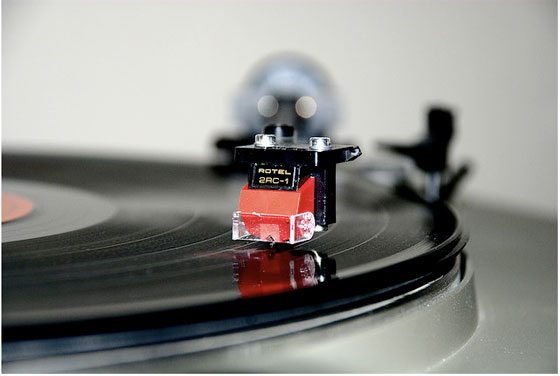
The material the records were made from changed from shellac to vinyl yet the disc format remains unchanged; this medium from the turn of the last century is still going strong! All through the constant use of the record in the second half of the last century, new performance styles appeared as DJs matched tempos, started at cue points, slip-drop cued and scratched. It is amazing to think now that it was in 1972 that a division of Matsushita called Technics released a record player you may well have heard of, the SL 1200. Although it was actually marketed as a Hi-Fi turntable, due to it’s +/- 8% pitch and strong direct-drive motor it soon became the must-have tool for the new wave. Armed with the SL 1200 and cutting edge techniques, “turntablists” appeared and would continue for the next 35 odd years!!!
The SL 1200 would go through many revisions in this time, the longest running and most common model being the MK II. It was only when Pioneer launched their CDJ 1000 that a suitable alternative to the turntable for the DJ became a realistic option.
THE CLEAR AND PRESENT…
The CDJ 1000 is still de rigueur with most venues around the globe, but we have reached another milestone as a new type of DJ system, the computer DJ set-up, landed on our planet not so long ago. These are able to support many software platforms and each play various file types from mp3 to WAV to FLAC to AAC. The mp3 dates back to the 90s and its compressed size made it easy to store and quickly transfer files over the ‘Net or e-mail. Digital files were a technological step forward yet at the same time marked a step backwards in terms of fidelity. None-the-less, consumers accepted the wow factor of the “want it right now” mentality at the expense of quality. Fortunately, as internet bandwidth has icnreased dramatically so has the standard mp3 quality. Its now common to find a club playable file almost anywhere.
Due to the explosion in mp3 usage, software companies jumped on the opportunity of using these files in a environment where they could be manipulated and mixed in a hardware free manner. Although fine for mobile style djing due to the sheer amount of music they could have at their disposal, the mouse and keyboard driven software did not catch on well with the masses.
Final scratch appeared in 2002 and by using a time-code record it allowed the user to manipulate digital audio from the computer directly on the oh-so-familiar turntable. However, in the same way as the CD’s first arrival, the software was a little clunky and hit/miss at best. After years of development and slow market adoption we now have 2 market leaders in the DVS department (digital vinyl control system): Serato’s Scratch and Native Instrument’s Traktor. These mature programs at last provided the feel and response that DJs wanted, combined with the flexibility of the software effectively sealing the deal on the newest industry standard.
FLASH FORWARD
Today, we may be seeing an emerging trend in djing that is gently moving away from the iconic phonographic circle that has been with us for so long. Many performers seem to be leaving traditional interfaces like turntables and CDJs behind in favor of high performance controllers that can be manipulated and controlled like musical instruments. Software now enables almost unlimited creative control over music allowing djs today to completely de-construct and re-image songs live.
These are things you simply cannot do in the same way with just a pair of CDs / turntables and mixer… Hyper London DJ Phil Drummond once said to me, “I’ve been mixing on 1200‘s for over 20 years, nothing to prove there. Now with Traktor I sometimes CHOOSE not to and to concentrate on something else far more interesting instead!” I’m sure you all saw the video posted here recently of five- time DMC World Champion DJ Craze impressively showing just what can be achieved with the vinyl control, effects and a few controllers. Our own Ean Golden has demonstrated superlative and inspirational skills with control surfaces many times in his quest to use and inspire others to work with software as a true musical instrument.
Without a new industry standard defined in this space, we are still in the golden age of controllers and controllerism where options abound but quality may not always prevail. This forces many to cobble together a mish mash of technolgy that suits their needs. A turntable here, a controller there, a few mixers and a random FX unit all get brought together to create a unique presentation. Companies like NI are attempting to define the next standard with all in one Software/Hardware combinations like the s4 but the jury is still out as to whether thats the road this industry will take in the long run.
TIME TO DUST OFF THE CRYSTAL BALL…
So, what’s next? Looking at the trends right now, it would seem that there are certainly exciting times ahead! Now that a majority of music is in a computer-readable format, it is clear that physical media is out. As the Internet becomes quicker and storage cheaper, we can have our large uncompressed files in less time than making a good cup of coffee with promises that is will soon be instantaneous.
The software heart of our systems is advancing at a great rate and as new and exciting concepts are being developed every month. I personally believe that technology found in Melodyne’s polyphonic analysis will soon become common place, allowing the user to strip elements out of a complete track in real time, creating mind blowing live remixes of any material.
The most visual aspect – and perhaps the most exciting – is how we control our software. We are seeing an emergence of interest in touch technology. Ipad djing and large touch sensitive tables all offer a glimpse into what the future may hold. While these technologies hold promise, they have failed to really gain momentum yet. Could that be because they only 2 dimensions? In the 80s Jean-Michel Jarre was triggering MIDI with a pair of white gloves over an array of laser beams. I therefore propose a new type of interface medium, a different type of screen, a screen technology that is in 3 dimensions and works on motion, hand manipulation and touch. Yes, a true “Minority Report” type system. Science fiction from a movie? I think not. Have a peep at this and decide for yourself:
Additional Reading on Dj History:
HISTORY of DVS @ CDM


